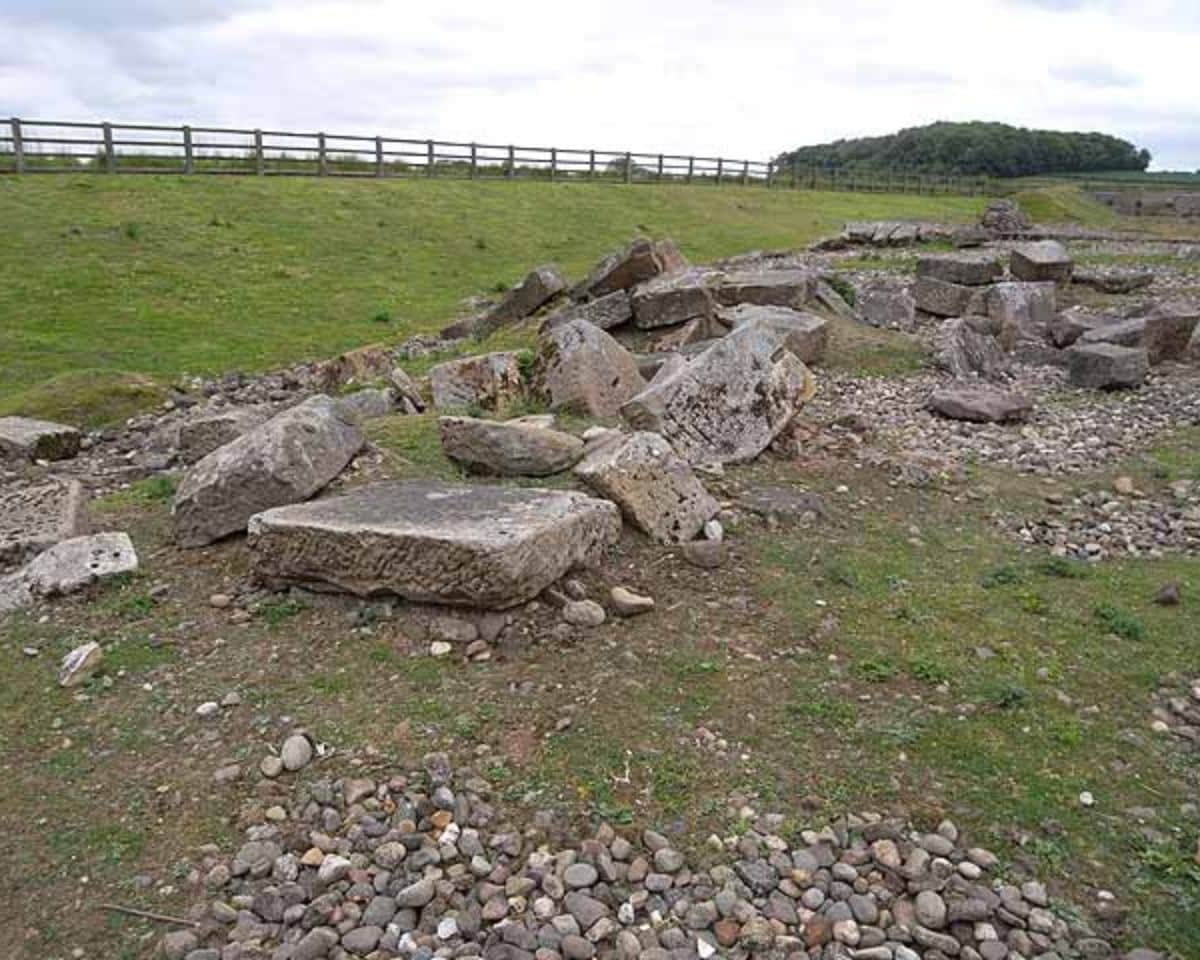
Piercebridge Roman Bridge, Dere Street, where a US student found ancient gold. Credit: Oliver Dixon / Wikimedia Commons / CC BY-SA 2.0
A US student uncovered a rare ninth-century gold artifact during her first archaeological dig in Britain, just ninety minutes into her initial day on site. The find, made by Yara Souza of Orlando, Florida, took place in July during a university-led excavation in Redesdale, Northumberland, near the ancient Roman road known as Dere Street in northern England.
Souza, currently studying archaeology at Newcastle University, had traveled over 4,000 miles from the United States to participate in the excavation. Her discovery places her among the few early-career archaeologists to recover such a significant historical object.
The gold piece, believed to date back to the 800s, includes a decorative finial and may have served a religious or ceremonial function.
An archaeology student has discovered a rare piece of gold during her first archaeological excavation! 🤩
The early medieval object was unearthed during a recent excavation in Northumberland & will hopefully be displayed in the @GNM_Hancockhttps://t.co/T1Yb4zv4LM#WeAreNCL pic.twitter.com/mCHPC7qTMH
— Newcastle University (@UniofNewcastle) August 13, 2025
Rare medieval find along Roman route
University researchers explained that during the early medieval period, gold was reserved for individuals of high status.
The presence of the artifact along a known Roman and post-Roman route supports the idea that elite groups continued to use the area long after Roman occupation had ended.
James Gerrard, professor of archaeology at Newcastle University, referred to the artifact as an exceptional and exciting find. He expressed enthusiasm for Souza’s achievement, noting that it’s rare for a student at the start of their career to uncover something of such historical value.
Gerrard also emphasized the importance of the artifact’s location, saying it adds weight to existing research that Dere Street remained a major route for centuries.
US student’s first dig leads to major breakthrough in Britain
Souza had originally planned to attend an earlier dig at Birdoswald Roman Fort but missed it due to illness. She said the experience of finding an object untouched for over one thousand years was overwhelming. She described feeling both excited and stunned, particularly because she made the discovery so early into her first fieldwork experience.
Archaeologists are continuing to study the item to learn more about its origins and purpose. While its precise purpose remains uncertain, experts agree it likely belonged to someone of considerable influence during the early medieval period.
The discovery adds to a series of recent archaeological finds in the United Kingdom. In May, volunteers unearthed two 2,000-year-old shoes at Magna Roman Fort, also in Northumberland. Later in the summer, officials reported finding a cache of ancient Roman coins in the English countryside, believed to be equivalent to a soldier’s monthly wages.
The artifact uncovered by the US student in Britain has now become part of a growing list of discoveries shedding light on the region’s layered and evolving history.